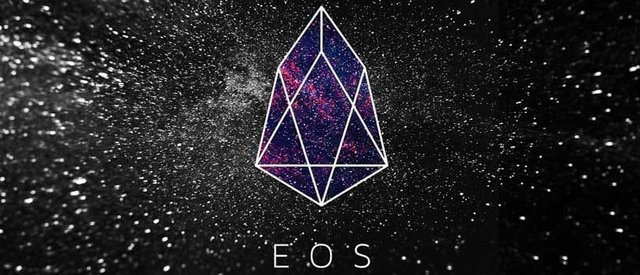Eos explained !
IN A NUTSHELL:

EOS is a blockchain-based, decentralized operating system, designed to support commercial-scale decentralized applications by providing all of the necessary core functionality, enabling businesses to build blockchain applications in a way similar to web-based applications.
EOS’s asynchronous communication and parallel processing provide scalability, while its ownership model eliminates transaction fees. These features make EOS a serious competitor of Ethereum (although EOS’s ICO actually supports Ethereum). EOS uses delegated-proof-of-stake and introduces the ability to fix bugs and rollback changes with supermajority consensus.
The project is headed by blockchain VIPs. 20% of the EOS token supply were sold for about $185M in ETH over the first 5 days of the 341-day long token sale. (And 10% are reserved for block.one). The structure of the token sale is such that the remaining 70% (i.e., the majority) of EOS tokens will be produced and sold at market value.
EOS, by block.one, is a blockchain-based, decentralized operating system, designed to support commercial-scale decentralized applications by providing all of the necessary core functionality(including databases, accounts with permissions, scheduling, authentication, and handling communication between the application and the internet), thus allowing developers to focus on their own particular business logic. EOS.IO is software that allows businesses to build blockchain applications that resemble existing web-based applications, using an architecture similar to website frameworks.
Two promised features of EOS have really caught everyone’s attention, though: elimination of transaction fees (via an ownership model whereby users own and are entitled to use resources proportional to their stake, rather than having to pay for every transaction), and scalability (they say it can process millions of transactions per second with asynchronous communication and parallel processing). High transaction costs and bad throughput are Ethereum’s critical weaknesses, so these features make EOS a serious contender for the title of go-to blockchain development solution. Notwithstanding, since EOS is still largely conceptual, its ICO is being conducted on Ethereum (ERC-20).
EOS’s ownership model provides d’App developers with predictable hosting costs, requiring them only to maintain a certain percentage or level of stake, and makes it possible to create freemium applications. Furthermore, since EOS token holders will be able to rent / delegate their their share of resources to other developers, the ownership model ties the value of EOS tokens to the supply and demand of bandwidth and storage.
EOS also introduces the ability to fix bugs and rollback changes with supermajority consensus, rather than requiring a hard-fork. This is due to EOS using delegated-proof-of-stake, whereby multiple witness-nodes are nominated by the network as representatives to make certain high-level decisions more quickly, without polling the entire network. Although this makes the blockchain somewhat less decentralized, it contributes to the ability of mainstream enterprises to adopt and interact with blockchain technology.
CTO Dan Larimer is credited with inventing delegated proof-of-stake and the concept of decentralized autonomous organizations, and he founded BitShares (a decentralized asset exchange) and Steemit (a blockchain-based social media platform). Larimer and the BitShare core development team also founded Cryptonomex, the company behind Graphene, an open-source blockchain deployment platform claimed to be capable of processing over 100,000 transactions per second with an average confirmation time of less than 1 second. Some might say, however, that Larimer is a controversial figure in the blockchain community (of the snake-oil salesman variety).
CEO Brendan Blumer is also founder and CEO of ii5, whose debut product is 1group, a centralized property-listing platform for realtors in India. Before ii5, Blumer founded Okay.com (also a real estate platform, in Hong Kong), which merged with Asia Pacific Properties (APP) about a year after launching, and before that was http://Accounts.net, an MMORPG trading platform (in the US). Blumer’s LinkedIn profile says he relocated to Hong Kong at the age of 18 when Brock Pierce (currently Chairman of the Bitcoin Foundation and Co-Founder and Managing Partner of Blockchain Capital; founder of IMI Exchange, ZAM, and IGE) acquired an operation he had started (at 15), selling virtual assets on a website he had developed. Brock Pierce is also block.one’s Chief Strategy Officer.
Another blockchain veteran involved in EOS is advisor Ian Grigg, a financial cryptographer who has been building cryptographic ledger platforms for over 20 years; inventor of the Ricardian Contract and co-inventor of Triple-Entry Accounting.
Block.one (which is based in the Cayman Islands, by the way), received the equivalent of about $185M in ETH over the first five days of its 341-day long token distribution, in exchange for 20% of the total supply of 1 billion EOS tokens. The EOS token distribution, which began on June 26, 2017, has an elongated timeframe in order to avoid the quick frenzy of a short token sale and give
people ample time to learn about the project and make informed decisions. The distribution is, however, divided into periods – 700M additional EOS tokens (70% of the total supply) have been split evenly into 350 consecutive 23-hour periods of 2M tokens each. At the end of each period, the number of EOS tokens sold will be distributed pro rata amongst all authorized purchasers, based on the total ETH contributed during that period. The remaining 100M EOS tokens (10% of total) have been reserved for block.one. A unique aspect of this ICO model is that trading of EOS tokens will have begun during the ICO, effectively ensuring that the majority of tokens will be produced and sold at market value. Once the token distribution is over, the EOS blockchain will no longer have any connection to the Ethereum network; however, it is unclear when the EOS blockchain will launch.
This was the old info for an updated review go here > cryptocurrency classes & iot specialist
Hi! I am a robot. I just upvoted you! I found similar content that readers might be interested in:
https://www.quora.com/What-is-EOS-cryptocurrency